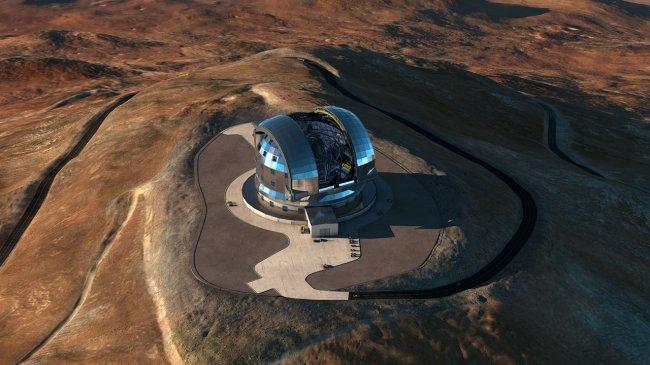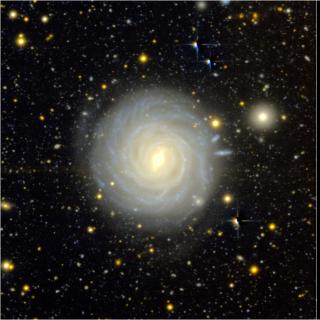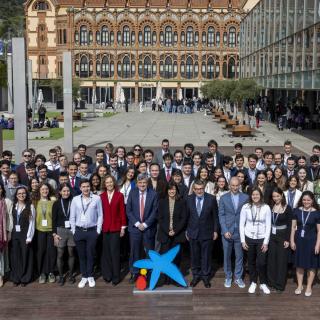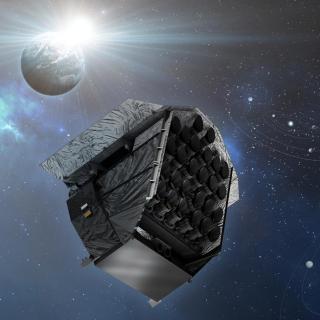Scientists and engineers have begun mapping out the specifications of two new instruments that will be part of the instrument suite on ESO’s forthcoming European Extremely Large Telescope (E-ELT). MOS (the Multi-Object Spectrograph) and HIRES (the High Resolution Spectrograph) will be world-leading workhorse instruments on what will be the world’s largest telescope.
The contract to begin design studies for the MOS was signed on 18 March 2016 by ESO and the CNRS-INSU, the leading institution in the MOSAIC consortium [1]. The instrument will combine high spectral and spatial resolution and will carry out wide-field surveys in the visible and infra-red parts of the spectrum. It will allow astronomers to probe some of the deepest mysteries of the Universe: when did the first galaxies form and how did they aggregate into large structures like the Milky Way; how are ordinary matter and dark matter distributed about the Universe; and how do planets around other stars form and evolve?
The contract to begin design studies for the HIRES was signed on 22 March 2016 by ESO and the HIRES consortium, led by INAF [2]. HIRES is a high-resolution spectrograph, simultaneously operating at visible and infra-red wavelengths that will be used for detailed and accurate studies of individual objects. It will be able, for example, to study the atmospheres of planets around other stars, searching for signatures of life; it will allow astronomers to reveal the signatures of very first generation of stars in the primordial Universe, and to determine whether some of the fundamental constants of physics (such as the ratio between electron and proton masses), which regulate most physical processes in the whole Universe, actually change across the cosmic epochs.
Instruments of this type are in the essential toolbox of every modern telescope — these world-leading examples will make the most of the enormous light-gathering power of the E-ELT’s 39-metre main mirror, giving them a performance second to none.
Notes:
[1] The MOSAIC consortium comprises institutions from 11 countries:
Observatoire de Paris; Laboratoire d’Astrophysique de Marseille; IRAP, Toulouse (France); UK Astronomy Technology Centre; Rutherford Appleton Laboratory; RALSPACE, Oxford; Oxford University; Durham University (UK); IAG, São Paulo; National Astrophysical Laboratory, Itajuba (Brazil); Amsterdam University; NOVA, Leiden Observatory, Universiteit Leiden (Netherlands); Leibniz Institute for Astrophysics, Potsdam (Germany); Helsinki University (Finland); Stockholm University (Sweden); Complutense University of Madrid (Spain); Roma Observatory (Italy); Vienna University (Austria); Lisboa University (Portugal).
[2] the HIRES consortium comprises institutions from 12 countries:
Board of Observational Astronomy, Federal University of Rio Grande do Norte; Mauá Institute of Technology (Brazil); Pontificia Universidad Catolica de Chile, Centre of Astro Engineering; Universidad de Chile, Department of Astronomy; Universidad de Concepcion, Center of Astronomical Instrumentation; Universidad de Antofagasta (Chile); Niels Bohr Institute at the University of Copenhagen; Institute of Physics and Astronomy at the University of Aarhus (Denmark); Laboratoire d’Astrophysique de Marseille; Institut de Planétologie et d’Astrophysique de Grenoble; Laboratoire Lagrange de l’Observatoire de la Côte d’Azur (France); Leibniz Institute for Astrophysics, Potsdam; Institut für Astrophysik, Universität Göttingen; Zentrum für Astronomie Heidelberg, Landessternwarte; Thüringer Landesternwarte Tautenburg; Hamburger Sternwarte, Universität Hamburg (Germany); Istituto Nazionale di AstroFisica (Italy - lead institution); Nicolaus Copernicus University in Toruń, Faculty of Physics, Astronomy and Informatics (Poland); Instituto de Astrofísica e Ciências do Espaço ) at Centro de Investigação em Astronomia/Astrofísica da Universidade do Porto and at Faculdade de Ciências da Universidade de Lisboa ; Instituto de Astrofísica de Canarias; Instituto de Astrofísica de Andalucía-CSIC; Centro de Astrobiología (Spain); Department of Physics and Astronomy, Uppsala University (Sweden); Université de Genève, Département d’Astronomie (Observatoire de Genève); Universität Bern, Physikalische Institut (Switzerland); Cavendish Laboratory University of Cambridge; Institute of Astronomy University of Cambridge; UK Astronomy Technology Centre; Centre for Advanced Instrumentation - Durham University; Institute of Photonics and Quantum Sciences (School of Engineering and Physical Sciences, Heriot-Watt University), (United Kingdom).
Contact:
Rafael Rebolo: rrl [at] iac.es
Jonay González Hernández: jonay [at] iac.es
Enric Pallé: epalle [at] iac.es
Carlos Allende-Prieto: callende [at] iac.es



